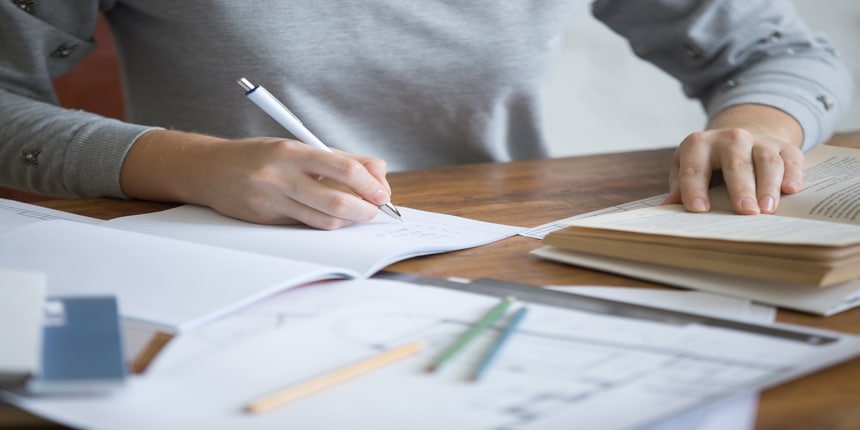The Duolingo English Test’s Two-Camera System Explained: How It Works and Why It's Important
The Duolingo English Test (DET) has become a preferred choice for students planning to study abroad, offering a flexible, accessible, and affordable alternative to traditional English proficiency exams. As an online test that can be taken from home, the DET is especially convenient for Indian students navigating application deadlines, visa processes, and university admissions. With acceptance from over 5500 universities globally—including prestigious institutions in the US, UK, Canada, and Australia—the DET is levelling the playing field for students from all backgrounds.
This Story also Contains
- The Mechanics of the Two-Camera System
- Requirements:
- How It Works: Step-by-Step Guide

As universities increasingly turn to remote testing solutions, ensuring the security and integrity of these tests is crucial. To proactively enhance its security measures to ensure the test is as secure as possible, the Duolingo English Test (DET) has introduced a new two-camera system. This system, which uses a computer’s webcam and a smartphone’s camera, provides a complete view of a test taker’s testing environment. As more universities worldwide accept DET scores, students need to understand how this new feature works and how it benefits them. So, what’s the two-camera system all about, and why does it matter for students?
The Mechanics of the Two-Camera System
- Primary Camera (Computer Webcam):
- Captures the test-takers face and upper body
- Monitors eye movements and general behaviour
- Secondary Camera (Smartphone):
- Provides a wider view of the testing environment
- Records the computer screen and keyboard
Requirements:
Test takers will need:
A laptop or computer: which will be the primary camera & device
A fully charged smartphone with a camera: which will be the secondary camera
A reliable internet connection
A well-lit, quiet room
Passport for id proof
A fully charged smartphone with a camera
A stable object to prop up your phone (e.g., a book or phone stand)
A phone charger (optional)
One can borrow a phone if they don't own one. They may also use a tablet if needed, however a secondary laptop cannot be used.
How It Works: Step-by-Step Guide
Setup: Scan a QR code with a smartphone to activate the secondary camera.
Positioning: Place the phone to capture both the computer screen and keyboard.
Synchronisation: Both cameras feed sync and are encrypted in real time.
Monitoring: AI algorithms analyse the feeds for irregularities or rule violations.
Review: Human proctors review the footage if the AI detects any suspicious activity.
Remember to keep the phone's browser window open and ensure the secondary camera is recording continuously throughout the entire test. The phone must remain positioned towards your computer for the test to be considered valid. Recording will automatically stop once the test session is complete. Watch this video to understand how to set up the second camera for the DET.
This system not only deters cheating but also reassures honest test-takers that their efforts will be recognized and validated. Providing a clear, comprehensive view of the testing environment, leaves no room for doubt about the legitimacy of a student's score. The two-camera system is not just about security; it's about empowering students to demonstrate How It Works: Step-by-Step Guidetheir English skills with absolute confidence.
Frequently Asked Questions (FAQs)
No special equipment is needed. The on-screen instructions suggest leaning the phone against a sturdy object, like a mug. A phone stand can also be used if available, as long as it keeps the phone stable during the test.
The phone’s camera must continuously record the screen and keyboard throughout the entire test. If the video is interrupted, obscured, or tampered with, the session will be cancelled or invalidated, and the test must be retaken from the beginning.
Since the test is timed, it’s recommended that the test taker quits and restarts the test if their phone falls over during the session.
No, both the computer’s webcam and the secondary camera are required to take the test. The two work together to ensure a complete view of the test environment.
Yes, scores earned before the secondary camera was introduced remain valid. The DET continues to evolve its security measures, and the addition of the secondary camera is part of ongoing improvements to maintain the integrity of the test.
During setup, the phone’s video feed will appear on the computer screen. Test takers should adjust the phone until both the screen and keyboard are fully visible in the frame. The phone may need to be placed slightly behind and to the side of the computer for the best angle.
Applications for Admissions are open.
Want to study in Ireland? Explore Universities & Courses
Study in Canada
ApplyExplore Universities, Courses & Subjects | Work while study
Study in UK
ApplyApply for upcoming intake & plan your journey
Study in USA
ApplyUniversities inviting applications | Get expert guidance
Study in Australia
ApplyShortlist best ranked universities & get expert guidance